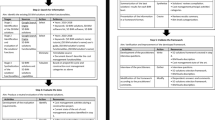Abstract
Collaborative project management is becoming a key means of survival for managing the integrated circuit (IC) foundry business. Starting a new IC foundry fabrication project involves complex organizational collaboration and systems integration. In the past, the lack of adequate theoretical approaches to combine parallel systems has led to poor integration of information and poor communication. This paper presents an object-oriented reference model for helping the project managers and the participants to better manage the collaborative relationship and systems integration during the expansion of new IC fabrication foundries. The tool set of the architecture of integrated information systems (ARIS) is applied to describe the interaction between the organization, events, functions, and the systems flow. An object-oriented analysis approach is used to represent the architecture of the collaborative model. A prototype Web-based platform is constructed to demonstrate the model for the capacity expansion of the IC foundry industry and show the improved communication channel.
Similar content being viewed by others
References
Pfitzner L, Oechsner R, Schneider C, Ryssel H, Riemer M, von Podewils M (1999) Novel process control strategies for 300 mm semiconductor production. Microelectron Eng 45(2–3):247–256
Kuo C-H, Huang H-P (2000) Modeling and performance evaluation of a controlled IC fab using distributed colored timed Petri net. In: Proceedings of the IEEE International Conference on Robotics and Automation (ICRA 2000), San Francisco, California, April 2000, vol 3, pp 2191–2196
Kempf KG (1998) Improving throughput across the factory life-cycle. Intel Technol J Q4
Wortmann JC, Hegge HMH, Goossenaerts JBM (2001) Understanding enterprise modeling from product modeling. Prod Plan Control 12(3):234–244
Yusuf KO, Smith NJ (1996) Modelling business processes in steel fabrication. Int J Proj Manag 14(6):367–371
Heindel LE, Kasten VA (1997) P++: a prototype PC-based enterprise management system. Int J Proj Manag 15(1):1–4
Shi JJ, Deng Z (2000) Object-oriented resource-based planning method (ORPM) for construction. Int J Proj Manag 18(3):179–188
Eynard B, Gallet T, Nowak P, Roucoules L (2004) UML based specifications of PDM product structure and workflow. Comput Ind 55(3):301–316
Li H, Fan Y, Dunne C, Pedrazzoli P (2005) Integration of business processes in Web-based collaborative product development. Int J Comput Integr Manuf 18(6):452–462
Ranky PG, Lonkar M, Chamyvelumani S (2003) eTransition models of collaborating design and manufacturing enterprises. Int J Comput Integr Manuf 16(4–5):255–266
Gray CF, Larson EW (2000) Project management: the managerial process. McGraw-Hill, New York
Tseng FC (2002) From Asia to the world: TSMC’s past and future. In: Proceedings of the Haas Asia Business Conference (HABC) Presentation, Berkeley, California, March 2002
El Sawy OA (2001) Redesigning enterprise processes for e-business. McGraw-Hill, New York
Bruner C (1991) Thinking collaboratively: ten questions and answers to help policy makers improve children’s services. Education and Human Services Consortium, Washington, DC
Germain CB (1984) Social work practice in health care: an ecological perspective. Free Press, New York
Gray B (1985) Conditions facilitating interorganizational collaboration. Hum Relat 38(10):911–936
Gray B, Wood DJ (1991) Collaborative alliances: moving from practice to theory. J Appl Behav Sci 27(1):3–22
Kraus WA (1980) Collaboration in organizations: alternatives to hierarchy. Human Sciences Press, New York
Hord SM (1986) A synthesis of research on organizational collaboration. Educat Leadership 43(5):22–26
Specht H (1969) Disruptive tactics. Soc Work 14(2):5–15
Specht H (1975) Disruptive tactics. In: Kramer RM, Specht H (eds) Readings in community organization practice. Prentice-Hall, Englewood Cliffs, New Jersey
Graham JR, Barter K (1999) Collaboration: a social work practice method. Fam Soc 80(1):6–13
Chen Q, Hsu M (2001) Inter-enterprise collaborative business process management. In: Proceedings of the IEEE 17th International Conference on Data Engineering, Heidelberg, Germany, April 2001, pp 253–260
Taiwan Semiconductor Manufacturing Corporation (2001) Introduction to TSMC eFoundry suite. Available online at http://www.witsa.org/awards02/nominees/witsa/TSMCintro.pdf
Sieveking A, Davis WJ (1995) An object-oriented simulation language for master production scheduling in a flexible manufacturing environment. In: Proceedings of the IEEE International Conference on Systems, Man, and Cybernetics, October 1995, Vancouver, Canada, pp 189–194
Myers KH, Levary RR (1996) Capacity expansion analysis in a chemical plant using linear programming. Int J Mater Prod Technol 11(1–2):62–75
Towill DR, Cherrington JE (1994) Learning curve models for predicting the performance of AMT. Int J Adv Manuf Technol 9(3):195–203
Yang JL (2000) An approach to determine appropriate fab development plans by taking space constraints and cost-effectiveness into consideration. In: Proceedings of the 9th IEEE International Symposium on Semiconductor Manufacturing Conference (ISSM 2000), Tokyo, Japan, September 2000, pp 217–220
Benavides DL, Duley JR, Johnson BE (1999) As good as it gets: optimal fab design and deployment. IEEE Trans Semicond Manuf 12(3):281–287
Scheer A-W (1994) Business process engineering: reference models for industrial enterprise. Springer, Berlin Heidelberg New York
Taiwan Semiconductor Manufacturing Company Ltd. Home page at http://www.tsmc.com
United Microelectronics Corporation. Home page at http://www.umc.com
Kalpic B, Bernus P (2000) Business process modelling in industry—the powerful tool in enterprise management. Computers Ind 47(3):299–318
Author information
Authors and Affiliations
Corresponding author
Rights and permissions
About this article
Cite this article
Ku, KC., Kao, HP. & Gurumurthy, C.K. A collaborative model for capacity expansion of the IC foundry industry. Int J Adv Manuf Technol 34, 252–261 (2007). https://doi.org/10.1007/s00170-006-0612-5
Received:
Accepted:
Published:
Issue Date:
DOI: https://doi.org/10.1007/s00170-006-0612-5




